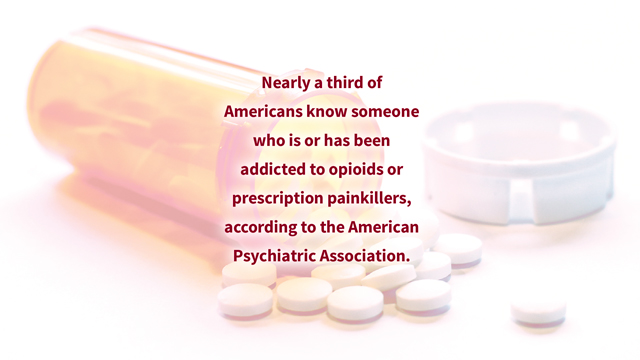It’s easy to say, “That wouldn’t happen to me or someone I love,” but the hard reality is that the opioid epidemic is much closer than you might think because opioids are so commonplace.
With five million procedures each year, wisdom teeth removal is one of the most common out-patient procedures for young adults. An American Medical Association report found that after a tooth extraction procedure, 61 percent of 14- to 17-year-olds were given a prescription for opioids. This is often the young person’s first exposure to opioids.
For the past three years, the Virginia Dental Association has been focused on training and educational opportunities for dentists to reduce opioid prescriptions.
I have been an advocate for the change. I did not choose that role. I was chosen for it.
Four years ago, my youngest son Adam died of an overdose of heroin laced with benzodiazepine after a brief addiction to heroin, preceded by addiction to opioid prescription medications. He sought treatment in an in-house recovery program as soon as we found out. After being in recovery for approximately seven months, he rejoined the community with a full-time job and started night school at a community college to become an emergency medical technician. In September 2014, Adam was nine months into recovery when he suddenly relapsed and overdosed. Four days later, he died.
Adam was a generous person in his life and his death. As a teenager, he loved volunteering for community activities, including supporting Henrico’s popular event, Field Day of the Past, and serving as a volunteer firefighter in Goochland County in high school. He was generous in his death by choosing to be an organ donor. Four of his organs were used to save four lives.
His death has been a life-altering event for me and for my family. I was deeply impacted by the unbearable grief of losing my youngest child. Professionally, the experience brought home to me my past interactions with patients, my prescribing of opioids, and my teaching of pain management as an academic surgeon. As a result, I enrolled in a graduate program in the field of addiction at VCU in collaboration with two other top international universities.
Since then, I have spoken, educated, and advocated on the opioid epidemic and addiction in as many settings and locations as I have been given the opportunity to do so.
At the local and national level, there are promising efforts in motion to reduce the number of opioid prescriptions. Today, dentists are much less likely to prescribe opioids. When a dental patient is given a prescription, he or she is given a lower dosage and fewer tablets.
Parents can serve as their child’s advocate before and after an oral surgery. Here are some questions for providers (and answers) to review before your child’s next medical procedure.
What kind of pain is expected with this procedure?
Discomfort following procedures varies significantly from mild to severe depending on many factors, including but not limited to the patient, the patient’s age, the degree of difficulty, and duration of the procedure.
What are some indications that my child needs to take an opioid for pain?
The most important indication for the likelihood the child may need opioid medications for pain is when non-opioid single and combination medications are not effective in reducing the pain to a tolerable level for the patient.
What are the risks associated with opioid use for pain related to the procedure?
These risks include temporary side effects such as nausea, vomiting, and constipation. Extended use may lead to misuse and addiction.
If an opioid is necessary, what should we do with any leftover tablets?
Most localities host events throughout the year when parents can take the leftovers to designated pharmacies and other locations. If you cannot find a drug take-back program near you, you can mix the medications with cat litter and dispose of them in the trash. It is generally discouraged to discard leftover medications into the drainage system.
Do you recommend any measures to prevent abuse?
The most significant predictor of long-term use after exposure to opioids is the initial duration of exposure to the drug. Parents should make every attempt to have the child use opioids for pain relief for the shortest period of time and only if it is absolutely necessary.
Finally, there is one recommendation I have for all parents and all patients: Only fill the prescription for the non-opioid and use it for initial pain management. Plan to use the opioid prescription as a backup only. If, after two to three days, the opioid is not needed, you can tear up the prescription which is much cheaper and safer than buying, storing, and disposing of the excess unused opioid medications. Ask your dentist to give you non-opioid analgesics with the appropriate dose and regimen as a first line of managing the postoperative dental pain. If you were advised to use over-the-counter non-opioid analgesics from what you may already have at home, make sure you ask your dentist to guide you on the adequate dose and the proper scheduling and appropriate duration.
If you or someone you know is struggling with opioid addiction, please visit curbthecrisis.com.




